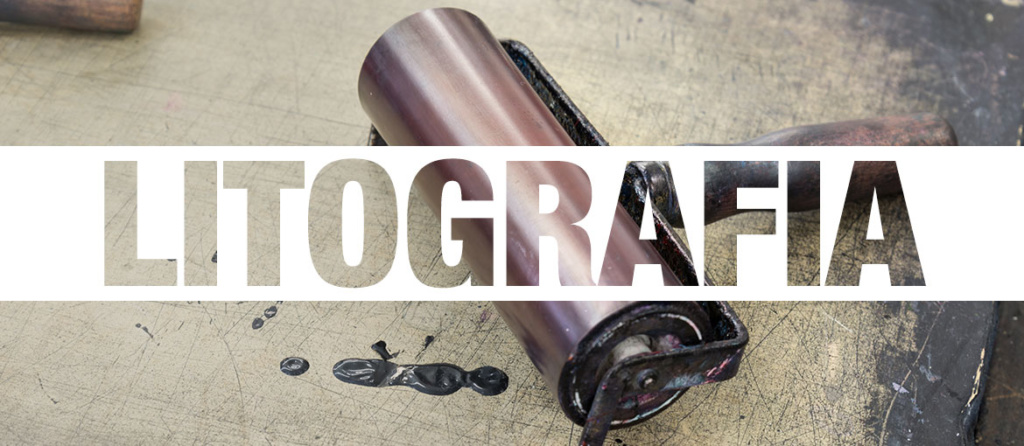What is lithography?
Let’s start with the study of the word, which comes from Greek and originates from the fusion of two terms: lithos, meaning stone, and ghafhé, writing. Here the main character is revealed: stone.
The lithographic printing process was developed in 1796 by Aloys Senefelder (Prague, 1771 – Munich, 1834). The technique was widely used (and still is) in the art world, as it allows multiple copies, even in color, of drawings made freehand. There are so many artists who have created wonderful lithographs over time, just to name a few: Georges Braque, Marc Chagall, Salvador Dalí, Francisco Goya, Paul Klee, Édouard Manet, Joan Miró, Edvard Munch, and Pablo Picasso.
But how does this “chemical” printing process work? We see it right away.
Inside the lithographic printing process
The principle behind lithography is chemical in nature, it is simple and is known to all: water and fatty or oily substances repel each other. That said, one can get into the heart of the process without getting lost.
Lithographic stone is a limestone extracted from quarries in Solnhofen, Bavaria, composed almost entirely of calcium carbonate. Its characteristics? It is very durable, has a very fine grain and is super porous so it absorbs water with ease. The perfect stone for printing must have no defects, its surface must be extremely even and its thickness no less than 6 cm, so as to minimize the risk of breakage. The slab is cut into rectangular sections, smoothed, and the edges are beveled.
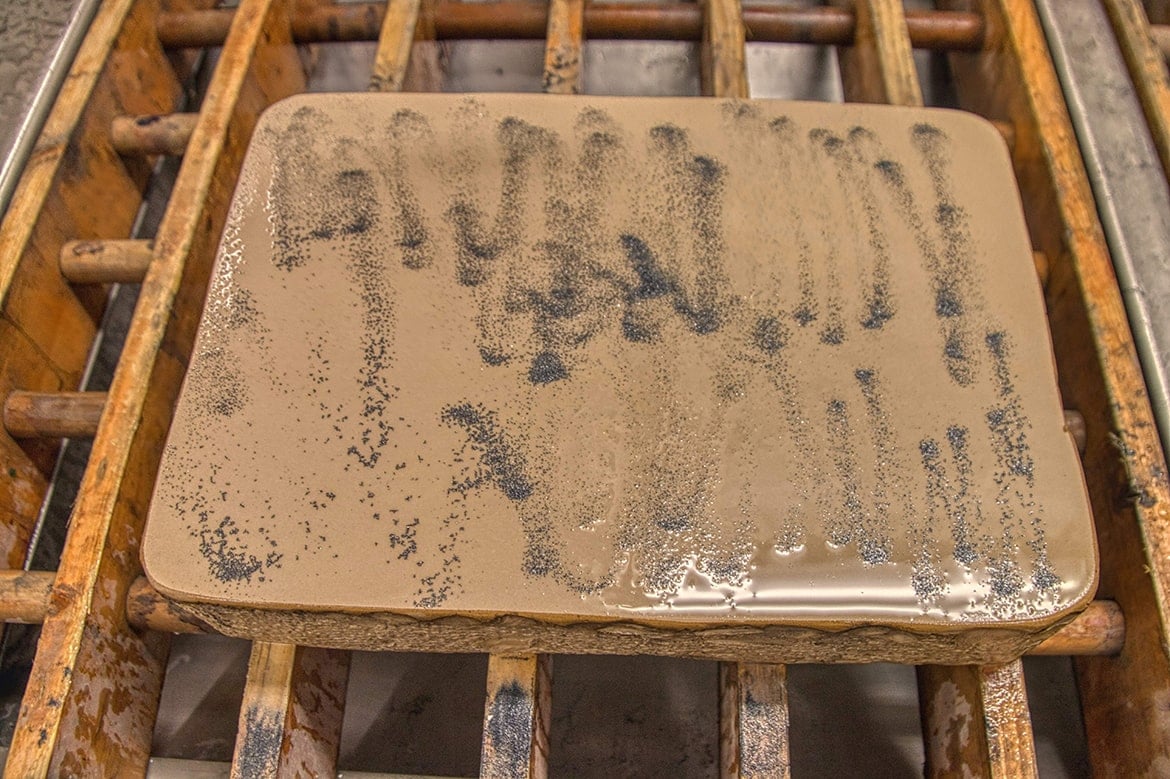
This you see is a lithographic plate. On its surface is the drawing with fat or resinous pencils, also called “soap pencils.” Then the stone is sprinkled with talcum powder and wetted with a solution of acetic acid and gum arabic: the acetic acid gives more relief to the drawing, and the gum arabic increases the stone’s refractoriness to fatty substances. The slab is then washed and, still wet, inked with a roller. At this point a chemical reaction happens: in the areas that have not been covered by the ink, the acid transforms the calcium carbonate in the stone into calcium nitrate, which has a hydrophilic property. In the drawn part, however, the calcium carbonate retains the ink.
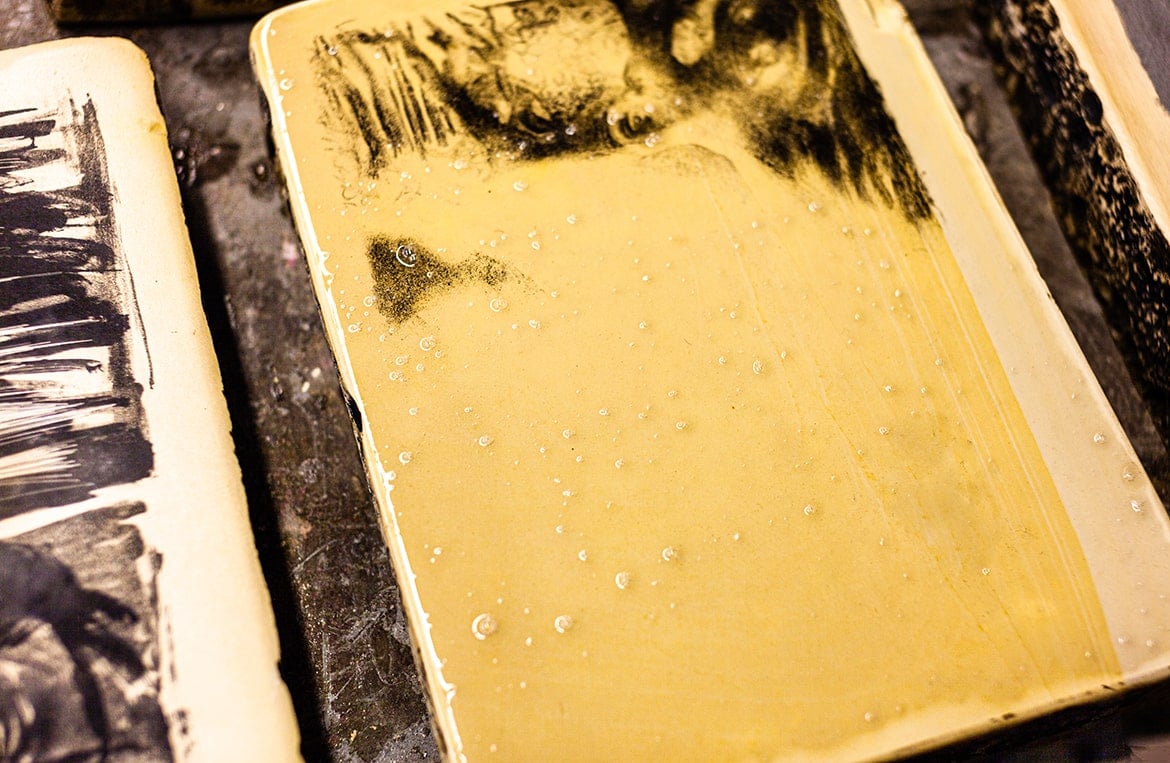
A sheet of paper is then placed on the plate and pressed to transfer the design. This produces the first lithographic print, which is characterized by a very precise and sharp stroke. This process can be repeated several times, even hundreds, by inking and moistening the same plate.
Here you can observe the result. This is a lithographic work by Benedetto Eredi (1750 – 1812), Jesus before the crucifixion.
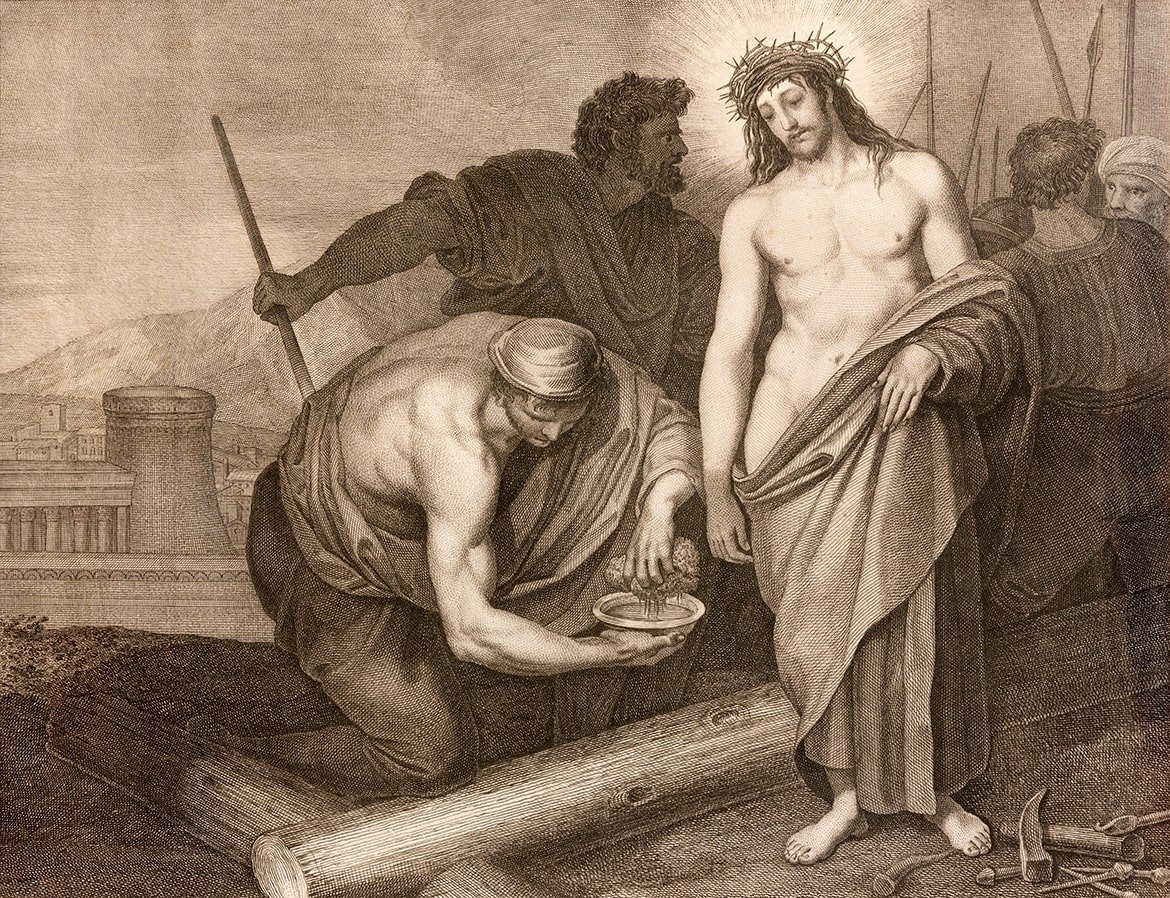
As we have anticipated, lithography also involves the reproduction of colors (up to 30 in the same work), this aspect has helped to spread the technique not only in art, but also in poster printing and book illustration. Chromolithography, as it is called, is a very labor-intensive process: consider that for each color to be included in the work, a plate must be prepared with the design perfectly reproduced. It goes without saying that the more numerous the colors, the longer the process becomes.
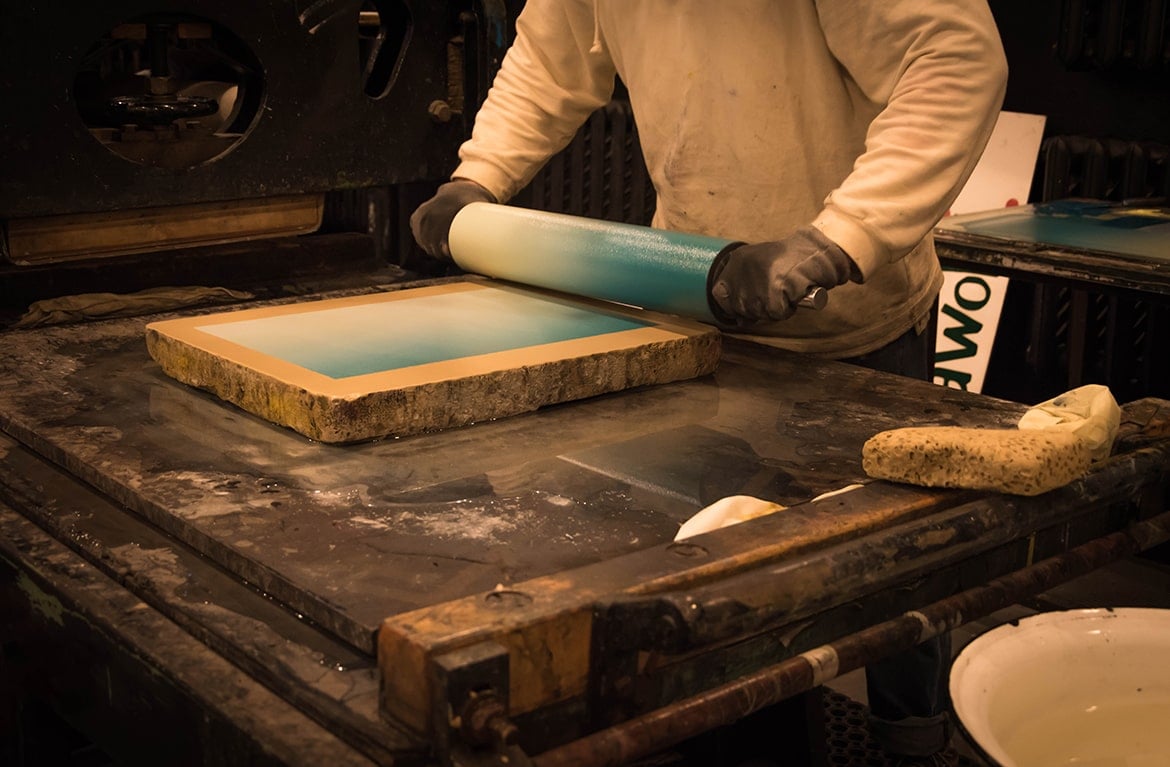
So far we have talked about the original lithographic printing process. Over time, however, a number of adjustments have been made to the technique to make it more practical and faster. The biggest one concerns the lithographic stone itself, a material that is impractical to handle, heavy and can break. That is why stone is now replaced by zinc and aluminum plates, two materials that ensure a result that is still perfect. In keeping with tradition, the technique borrows its name from the material used, so we will talk about zincography, on zinc, and algraphy, on aluminum.
Would you like to continue browsing? Then go to the press planet section of our blog, there you will find many other articles delving into the history and present of printing. Happy reading!

